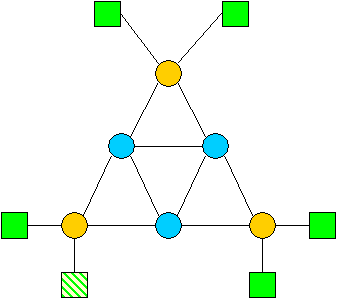| Summary
H-QRAM
Q-EDF
SesCo |
The
Session Coordinator is the underlying software engine responsible
for creating, admitting, monitoring, altering and terminating
sessions. A session is defined as a user running an application over
the network. The Coordinator is also known as the SescoServer. There
will be only a single instance of this process running on each
machine in an Q-RAM-based Network.
Sesco
Managed Network


Sesco Managed Network is composed of the following components:
Sesco (Session Coordinator) - It runs as global server on
one node. It applies Q-RAM algorithm to maximize utility. In
addition, it maintains a global resource list and provides feedback
to system manager.
Lrmd (Local Resource Manager) - It runs on every node as
an instance of the agent of Sesco. It does the following :
 |
Network
discovery |
 |
Resource
discovery (memory, network interfaces etc.) |
 |
Proxy
operations (Create/kill processes, resource reservation etc.) |
 |
Invokes
RK (Resource Kernel) to enforce resource management decisions |
Resource Kernel - It is installed on each host
machine. It provides mechanisms to implement virtual machine for a
set of processes.
Sesco is composed of the GUI front end that will be used by both
ordinary users and System Administrators. The former individuals
will use Sesco to make Application Requests that are either granted
and become sessions, or denied for any number of reasons.
Administrators are responsible for managing Sesco itself and the
underlying data files which together compose Sesco's vision of its
world, from users and groups, applications and their variants and of
course knowledge of all the hardware, network cards and nodes.

Session
Admission in Sesco
A session admission in Sesco happens in the following way.
- Arq (Admission request manager) sends admission request to
Sesco.
- Sesco determines QoS operating point of the application
- Sesco sends updated QoS set-point to necessary existing
applications and Lrmds.
- Sesco sends process invocation requests to Lrmds.
- Sesco sends resource reservation request to Lrmds.
- Lrmds create processes for a new session.
- Lrmds report pid to Sesco.
- Processes register control port with Sesco.
- Sesco sends QoS set-point to new processes.
|